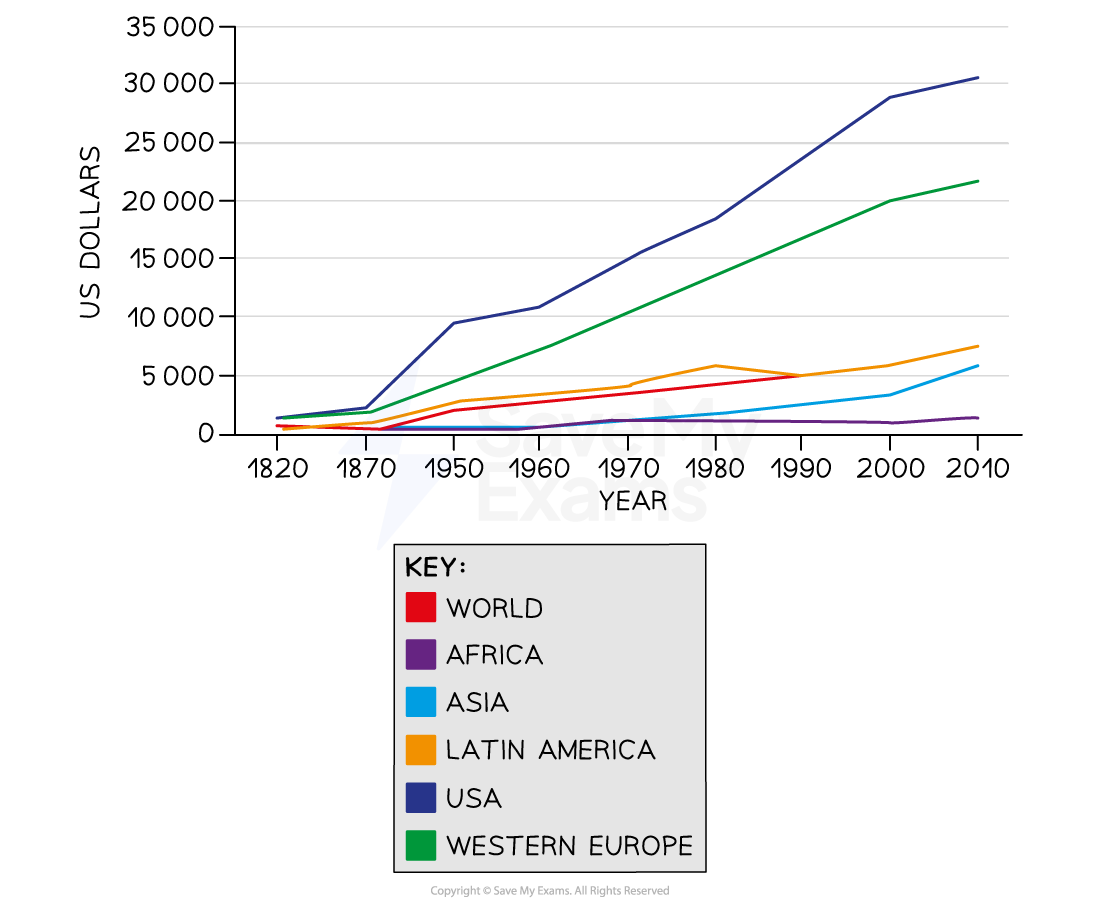Economic Measures vs Social Measures
Measuring Development
- Development can be measured in different ways using single and composite (combined) indicators
- A composite indicator uses more than one indicator to assess development, for example the Human Development Index uses three different measures
- An example of a single indicator that can be used is income which can be measured in different ways
- Gross Domestic Product (GDP) - the total (financial) value of goods and services produced in a country. It can be divided by the total population of the country to work out a per capita (average per person) figure to use to compare to other countries
- Gross National Income (GNI) - the total amount of money earned by the people and businesses within a country. A per capita figure can also be calculated for GNI
- Purchasing Power Parity (PPP) measures the price of certain goods in different countries which can help compare the purchasing power of different currencies
Economic and Social Measures of Development
|
Measure |
Description |
How it is calculated |
|
|
Economic |
Income per Capita |
The mean average income of a group of people |
The total source of income for a country and divided by the population to provide an average |
|
Economic Sector Balance |
The economy is split into four economic sectors and their importance changes as a country develops |
Estimation of the contribution of each economic sector to the total national income |
|
|
Social |
Human Development Index (HDI) |
A composite indicator, created by the UN, that ranks countries according to economic and social criteria |
The three measures (life expectancy, income and education) are scored between 0 (worst) and 1 (best). An average score is then taken to rank all the countries in the world |
|
Gender Inequality Index (GII) |
A composite indicator, created by the UNDP, measuring gender inequalities linked to three aspects: reproductive health, empowerment and labour force participation rate |
Countries are scored between 0 and 1. The higher the value, the greater the inequality |
|
|
Environmental Quality |
Measured using the global Environmental Performance Index (EPI) which looks at the amount of pollution outdoors as well as the quality of air inside homes |
Countries are ranked in order according to their performance across 11 areas related to environmental quality |
Worked example
State an example of a composite index measuring development
[1 mark]
Possible Answers:
- Human Development Index (HDI) [1]
- Gender Inequality Index (GII) [1]
- Happy Planet Index [1]
- Human Poverty Index [1]
Incorrect answers:
- GDP
- KOF Index
- Gini Coefficent
- Index of Multiple Deprivation (IMD)
Exam Tip
Read the question carefully, it asks for a composite index not a single index. Remember a composite index is an index that combines two or more elements to provide a more accurate picture of a country’s development




